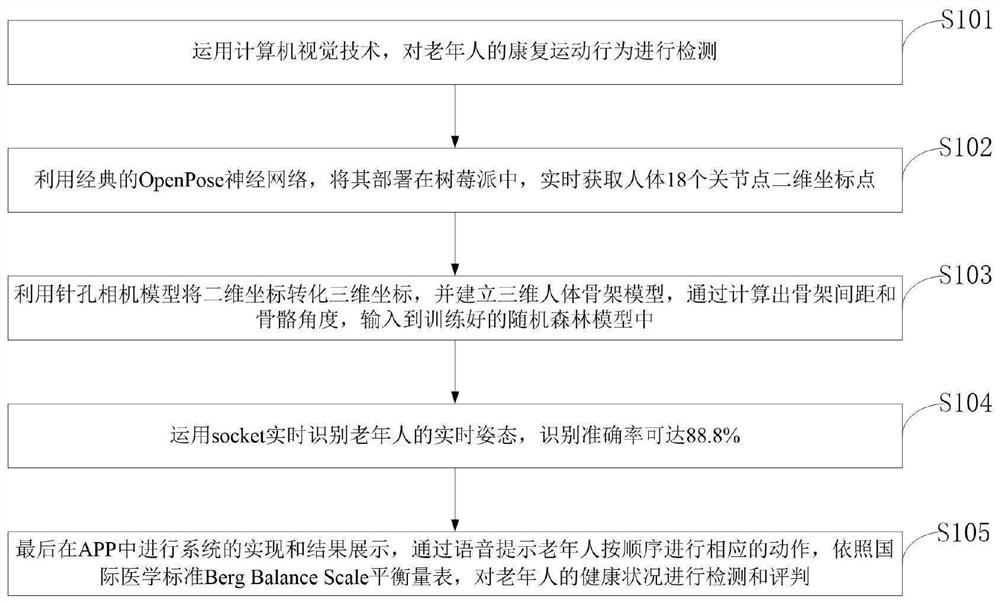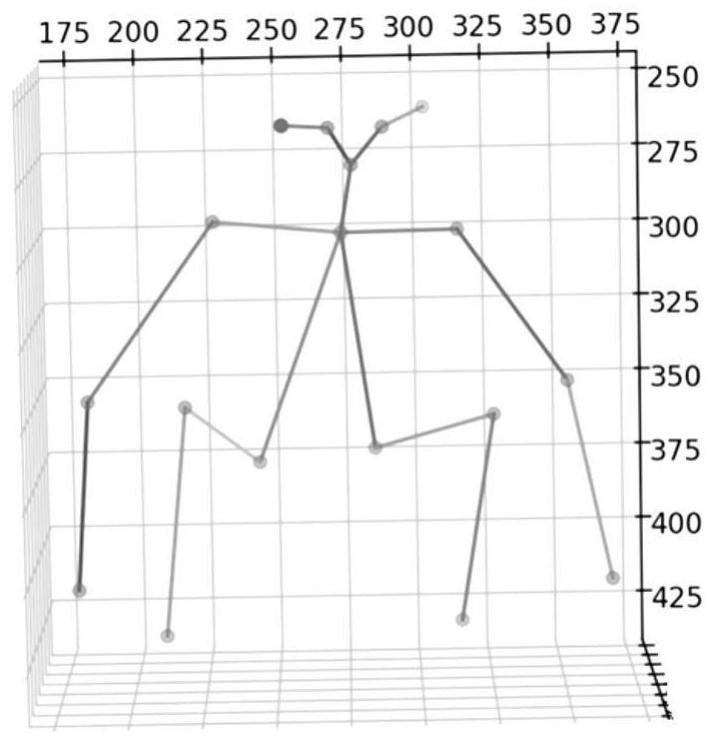Post-healing rehabilitation auxiliary detection system and method based on three-dimensional human skeleton model and medium
A human skeleton, auxiliary detection technology, applied in the field of computer vision, can solve the problems of poor medical resources, high operating costs, and inability to effectively protect the privacy information of the elderly, and achieve the effect of assisting disease recovery
- Summary
- Abstract
- Description
- Claims
- Application Information
AI Technical Summary
Problems solved by technology
Method used
Image
Examples
Embodiment
[0110] Such as figure 1 As shown, the post-healing rehabilitation auxiliary detection method based on the three-dimensional human skeleton model provided by the disclosed embodiments of the present invention includes:
[0111] S101, using computer vision technology to detect rehabilitation exercise behavior of the elderly;
[0112] S102, use the classic OpenPose neural network, deploy it in the Raspberry Pi, and obtain the two-dimensional coordinate points of 18 joint points of the human body in real time;
[0113] S103, using the pinhole camera model to transform the two-dimensional coordinates into three-dimensional coordinates, and establishing a three-dimensional human skeleton model, calculating the skeleton distance and bone angle, and inputting it into the trained random forest model;
[0114] S104, using the socket to recognize the real-time posture of the elderly in real time, and the recognition accuracy can reach 88.8%;
[0115] S105. Finally, implement the system...
PUM
 Login to View More
Login to View More Abstract
Description
Claims
Application Information
 Login to View More
Login to View More - R&D
- Intellectual Property
- Life Sciences
- Materials
- Tech Scout
- Unparalleled Data Quality
- Higher Quality Content
- 60% Fewer Hallucinations
Browse by: Latest US Patents, China's latest patents, Technical Efficacy Thesaurus, Application Domain, Technology Topic, Popular Technical Reports.
© 2025 PatSnap. All rights reserved.Legal|Privacy policy|Modern Slavery Act Transparency Statement|Sitemap|About US| Contact US: help@patsnap.com



